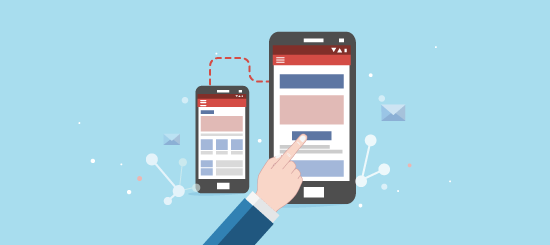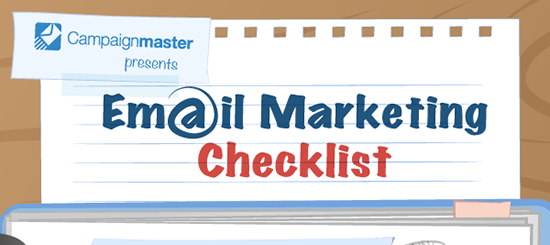A picture is worth a thousand words, but when it comes to creating image-only email campaigns, it is often better to write out those words.
Of course, including the right images is important, but having solely image-based emails will only lead to a heap of deliverability and engagement woes.
Don’t get us wrong, we understand the appeal – having an email campaign made up of a single image ensures there will be no random characters, inadequate spacing and you can even say goodbye to being restricted to using only web safe fonts.
However, although this campaign may end up being very visually appealing, this strategy will cause more problems than it solves.
In this blog, we’re going to explore the problems image-only email campaigns can cause and hopefully encourage you to have a mixture of content blocks in your campaigns, now being more relevant if you’re looking to design your Christmas e-cards.
- Spam Filters
Have you ever noticed one common denominator with the spam emails in your Junk folder? You guessed it – huge images that make up the entirety of the email body content (often used to hide offensive or deceptive wording). Sending image-only emails is something of a spammers practise and many spam filters are configured to send these kinds of emails straight to the dreaded Junk folder. In some cases, the email might not even get as far as the spam filter and could block the email entirely. So, if you’re aiming for the Inbox, we strongly advise against image-only campaigns. - No Preview Text
Preview or preheader text is invaluable to marketeers – it serves as a secondary subject line and entices your recipients to open and engage with your email, especially in a crowded inbox. If you’re sending an image-only email, you lose out on the opportunity to utilise preheader text and instead your recipients will see a messy image path/reference instead. Naturally, if you receive an email like this, you would assume it was spam and would delete it right away. This in turn will affect the engagement you receive on this campaign. - Reduced Searchability
It often happens that your recipients may want to recall some important information in a previous communication you sent. Now usually, it would be as simple and typing in some key words in a search bar and looking though results to find the relevant email. Your image-only email will not come up in any results as there is no content/text to search for (as the email is all images). Since they are unable to find anything, their interest may be lost and now they are onto looking at someone else’s email. - Slower Loading Times
Images inevitably add weight to email campaigns. Therefore, it makes logical sense that image-only emails will be much heavier and hence will take a long time to load. Keep in mind – the higher the quality of image, the longer the loading time. Realistically, your recipients will not hang about if your email is taking longer than a few seconds to load, reducing your engagement stats. - Compromised Accessibility
Recipients with visual impairments often use screen reading devices to interpret an email. Screen readers will often have a harder time trying to interpret image-only emails than they will with emails that contain actual text content. It is true that the image may have alt text, however, this is usually short and cannot replace an email’s entire body text. - Reduced Mobile Engagement
Majority of emails are now opened/viewed on mobile devices, meaning mobile friendly email designs are an absolute must. At first glance, it may seem that that an image-only email would be great to view on a mobile. However, in image-only emails the text is essentially set in stone, meaning it cannot be adjusted for your recipients. Furthermore, images meant for mobile tend to look overblown on a desktop – similarly, images meant for a desktop can look blurry on mobiles. - Difficult to Edit
Let’s be honest – a first draft of an email campaign will never be approved right away. There are almost always a bunch of edits that need to be done prior to the campaign being launched. With emails containing text content, it’s quite straight forward to edit the wording here, change a colour there or even add some more space anywhere. With image-only emails, for every change you would need to do it all on an image, re-upload, resize, re-test until it looks just about right. Not only is this extremely time consuming, but it can also be painstakingly tiresome if you have forgotten to make the smallest of changes! - No Image Download
A lot of email clients still block images by default, meaning the recipient still has to manually download images when receiving an email campaign. This means you entire campaign content will not be visible until they do so – that is if it even gets to land in the Inbox. Think about it, if you received an email and all that you saw was an image that needed to be downloaded, would you download the image or delete it right away thinking it’s spam?
How to Add Images – The Right Way!
Don’t be frightened of now using images – we are by no means saying not to add any images into your emails at all. We are just promoting the best practise of using a mixture of content so you can get the best of both words.
It has been found that a 60:40 ratio is the sweet spot; 60% being font and 40% being images. Using this ratio will help solve all of the issues mentioned in this blog. For Campaignmaster users, make sure to use our handy Spam Analysis tool to help you analyse whether your ratio is just about right or if your template may need some tweaking.
Do also remember when adding in images to consider how they may appear on mobile devices – design with both mobile and desktop view in mind and always remember to add in alternative text.
With our platform, you can even choose to remove images from a mobile and even present alternative images on desktop to mobile views.
To recap, using images is a great way to encourage engagement, but relying solely on them can mean no engagement at all.
If you need help in designing accessible and balanced templates, get in touch now and a member of our team would be more than happy to help. Email us at info@campaignmaster.co.uk or call us on +44 (0) 208 863 5334.









